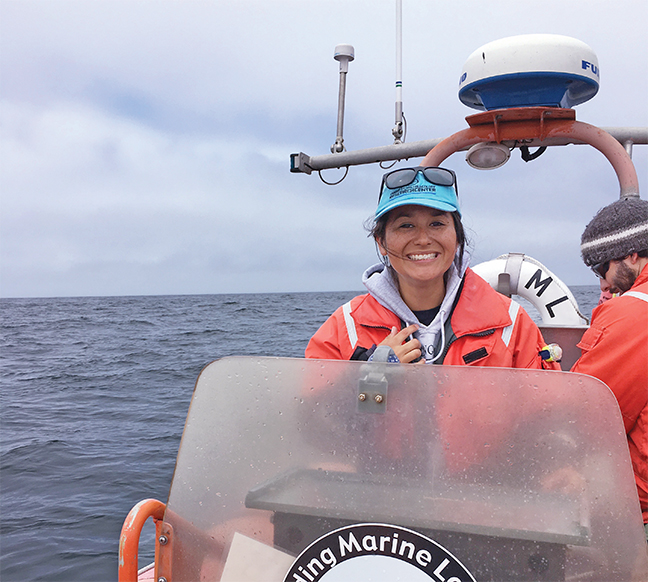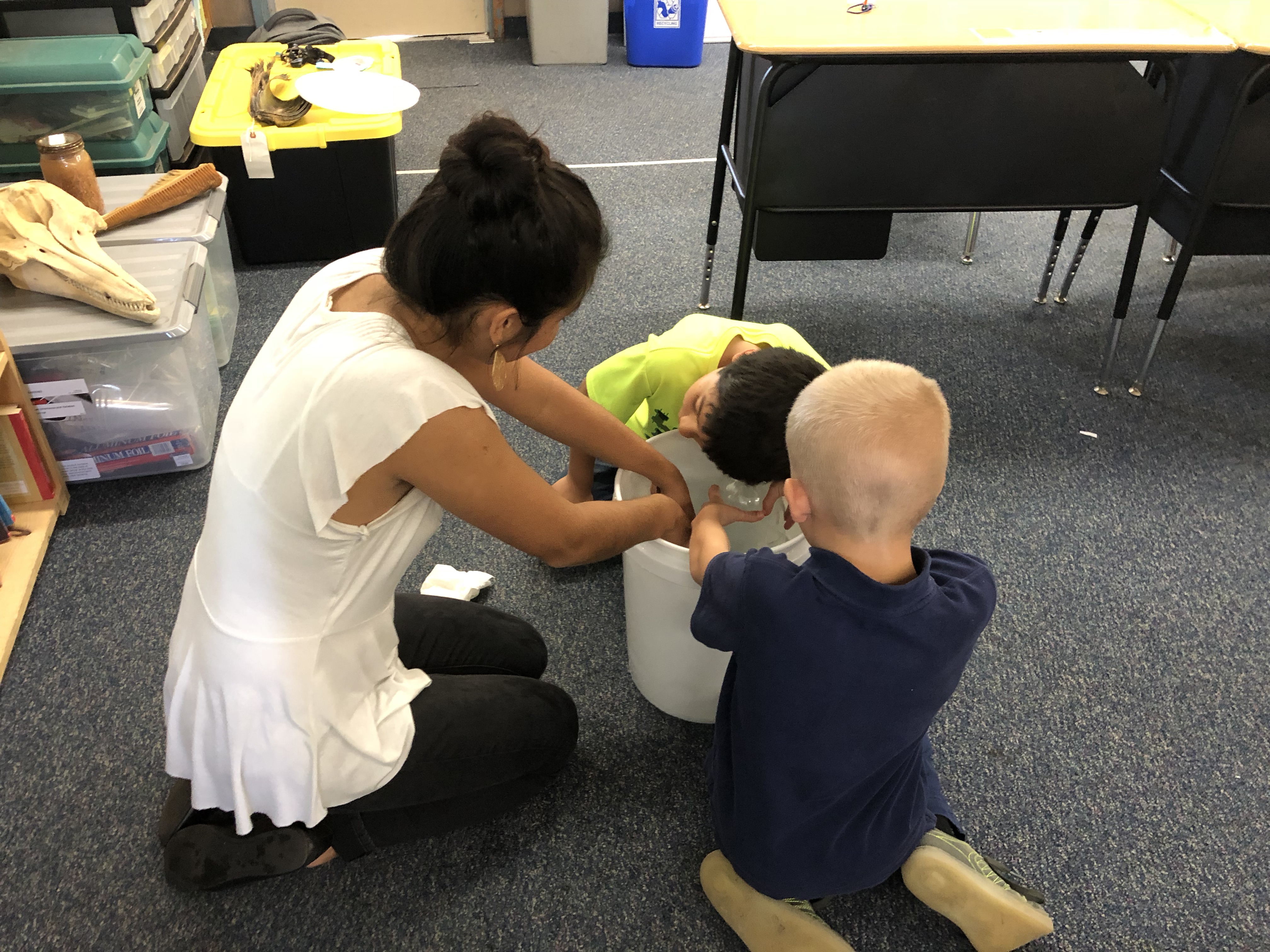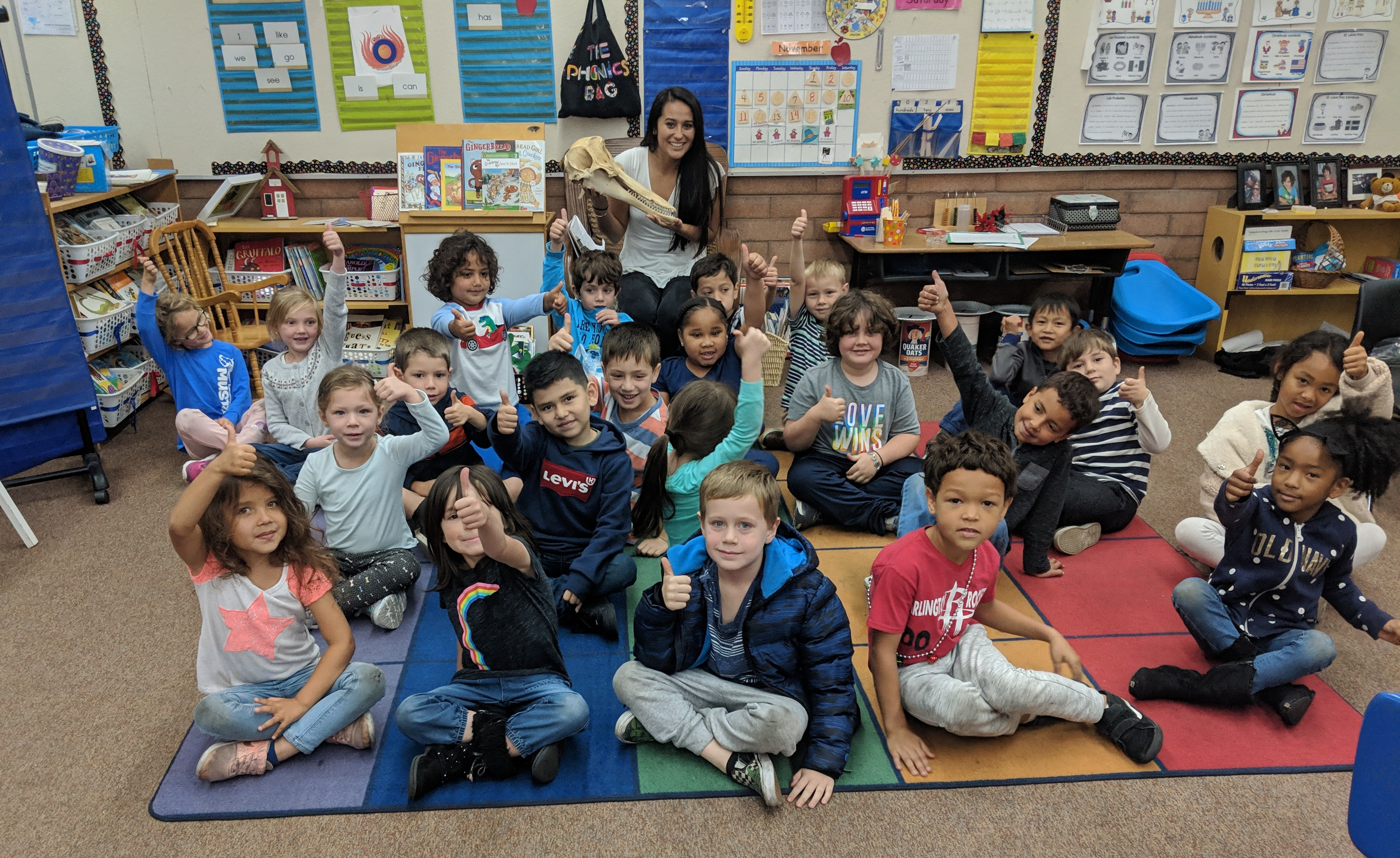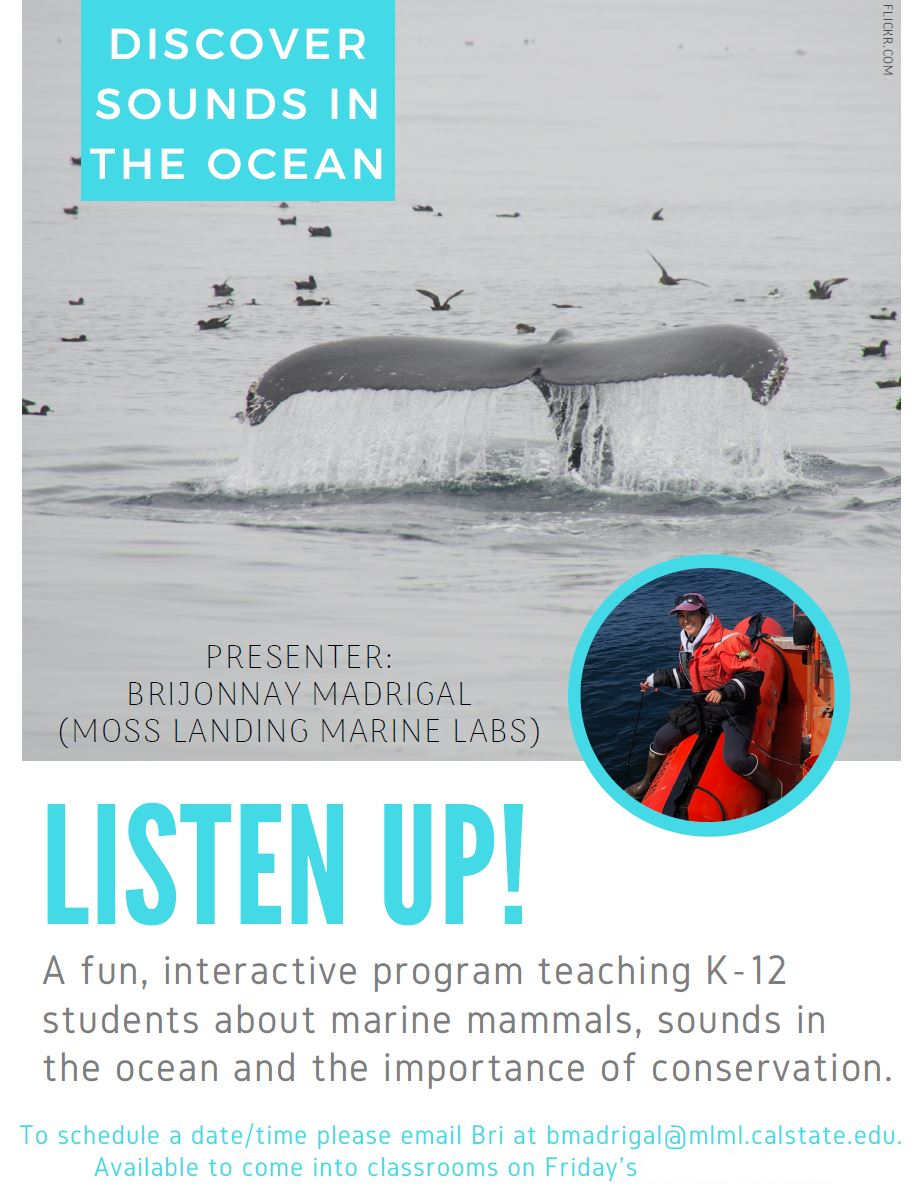By Brijonnay Madrigal, MLML Vertebrate Ecology Lab
 This week's post comes from grad student Bri Madrigal. Bri recently started her own K-12 outreach program called Listen Up! to get kids interested in science and teach about the importance of acoustics in the marine environment.
This week's post comes from grad student Bri Madrigal. Bri recently started her own K-12 outreach program called Listen Up! to get kids interested in science and teach about the importance of acoustics in the marine environment.
I love working with children. They are enthusiastic and inquisitive, and I am always so amazed by how much they can absorb and learn. From a young age, I knew I wanted to become a marine biologist and inspire children to be interested in science by exposing them to new subjects and teaching them about the ocean. As marine scientists, we realize the importance of ocean conservation and we want people to make changes in their daily habits in order to maintain healthy oceans and healthy ecosystems.
But first, we need to make people care about the ocean. How do you do that? One way is by connecting people to the amazing animals that live in the ocean. I believe that marine mammals like whales, dolphins, and other charismatic megafauna, are an avenue to tap into peoples' hearts and inspire them to care about our oceans. When these values are established as children, I believe this will make a more profound impact on how they perceive environmental issues, influence their daily habits and influence their vote as adults to make an impact on ocean conservation.
I wanted to make a difference in my community and developed a free, K-12 interactive program called “Listen Up!” to teach students about marine mammals, the basics of acoustics, and sounds in the ocean. But how do you teach a kindergartner vs. a senior in high school about sound? These are some of the questions I grappled with which led to me creating 4 different curriculum to cater to different grade levels: K-2nd, 3rd-5th, middle school, and high school. I advertised my program to local schools, and I received an overwhelmingly positive response!

So what do I do with the kids in the classroom? Well I begin the program by getting everyone on the same page about the characteristics of mammals and the different types of marine mammals. I bring in specimens from the MLML museum to enhance the kids' experience and give them things to see and touch like a jar of krill, baleen, and a dolphin skull to enhance their learning of feeding behavior in marine mammals.
Since it would be difficult to take the kids to the water, I bring the water to them! I bring in a bucket of water and a “listening device” I created out of a half of a 1-liter soda bottle. I clank metal together in air and then in the water so the kids can listen and decide if it is louder in air or water. A simple experiment like this not only demonstrates how much more efficiently sound travels in water than in air, but really gets the kids excited as they each get to have a turn listening. For the high school students, I bring in a slinky to demonstrate how sound waves move and to discuss the basics of acoustics. In addition, I always include a section where I talk about my research with Risso’s dolphin in Monterey Bay and encourage them to pursue internship and volunteer opportunities and relay the importance of going to college if they want to pursue science.

For all grade levels, we listen to clips of different local whale and dolphin species. Not only do I try to engage as many of their senses as possible, but we discuss why sense of hearing and sound would be the best sense for marine mammals to use underwater. The only marine mammals I focus on are species found out in the Monterey Bay to allow the students to see the amazing animals that are right in their backyard. We wrap up the 1-hour by playing a game called “Name that Sound” where I play a marine mammal sound and the students guess what is making the sound from a list of options. The kids are always so excited about this game and in all my elementary classes, the end of the game always ends with the class erupting in cheers because they are so excited when they get the answer right.
Seeing that kind of excitement and enthusiasm about the material really gets me excited and I always leave the classrooms feeling energized. I love interacting with the kids! They are so interested and engaged. It is amazing to see them listening intently and full of curiosity with lots of hands raised at the end for questions. Within 3 months, I have given 23 Listen Up! presentations at nine local elementary schools, high schools and a charter school and I hope to give more in the future.

Education and outreach are powerful tools for disseminating science to the public. As graduate students, we often become so focused on the research and the science, it is sometimes easy to lose sight of the importance of engaging with the public and expressing our passion for our work. When I come into classrooms, the kids are probably thinking, “That crazy whale lady!," because I come in with so much enthusiasm and passion.
But I think that passion is infectious, especially in the youth who are still trying to figure out what they want to be when they grow up and how they view the world. I feel that exposing kids to different types of science is a great way to open their minds to the possibilities and I hope that my “Listen Up!” program teaches kids new things they didn’t know before and inspires them to be interested in science. Although there may be future scientists in the classrooms I visit, ultimately, I want these kids to care about the ocean and the animals that live there.


